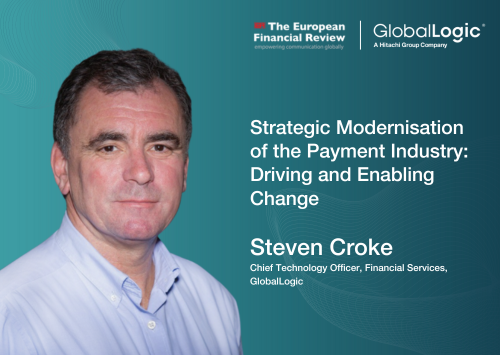- Services
Technology Capabilities
Technology Capabilities- Product Strategy & Experience DesignDefine software-driven value chains, create purposeful interactions, and develop new segments and offerings.
- Digital Business TransformationAdvance your digital transformation journey.
- Intelligence EngineeringLeverage data and AI to transform products, operations, and outcomes.
- Software Product EngineeringCreate high-value products faster with AI-powered and human-driven engineering.
- Technology ModernizationTackle technology modernization with approaches that reduce risk and maximize impact.
- Embedded Engineering & IT/OT TransformationDevelop embedded software and hardware. Build IoT and IT/OT solutions.
- Industries
- GlobalLogic VelocityAI
- Insights
BlogsDecember 16, 2024Gene LeybzonAccelerating Digital Transformation with Structured AI Outputs
This code produces the following output that can be imported into the candidate trackin...
 BlogsOctober 30, 2024Yuriy Yuzifovich
BlogsOctober 30, 2024Yuriy YuzifovichAccelerating Enterprise Value with AI
Discover how financial services integrations are transforming from standalone offerings...

- About Us
Press ReleaseGlobalLogicMarch 11, 2025GlobalLogic Launches VelocityAI to Harness the Power of AI, ...
VelocityAI combines advanced AI technologies with human expertise, helping businesses r...
 Press ReleaseGlobalLogicJanuary 10, 2025
Press ReleaseGlobalLogicJanuary 10, 2025GlobalLogic Announces Leadership Change: Srini Shankar Appointed ...
SANTA CLARA, Calif.–January 10, 2025– GlobalLogic Inc., a Hitachi Group Com...

- Careers

GlobalLogic’s Chief Technology Officer, Financial Services, Steve Croke, underscores the pivotal role of technology in the revolutionary and evolutionary modernization of payments, explaining why businesses must embrace technology to stay competitive, meet customer expectations, and seize future opportunities.
The payment industry has rapidly evolved over the past few years. There is a ‘perfect storm’ of regulatory change, new and improved standards and emerging, rapidly evolving technologies, AI in particular. Customer expectations and behaviours are changing fast, accelerated post-pandemic, meaning digital and personalised are the norm.
All of this means that businesses must refine and be able to keep refining their digital experiences rapidly.
Drivers of change evolving the payment industry
People power
While we often view payment modernisation as a top-down transformation driven by schemes and central banks, the real catalysts for change are customer expectations and social trends. These include shifting consumer behaviours, the growing demand for convenience, and the need for secure, hyper-personal experiences.
Businesses in the payment industry must harness the enablers of change. This is crucial to keeping pace with the social changes driving the evolution and meeting customers’ changing expectations.
One such example is the switch from cash to contactless. This is not new, of course. It’s a pattern that’s been with us for well over a decade. But what we’re now seeing is nuances and patterns by specific demographics. The use of digital wallets is not uniform across all ages, and we see cash usage actually increase for some segments in difficult times.
That’s not to say the tide will turn: BCG research suggests that countries switching to electronic payments will bolster annual GDP by as much as three percentage points. So, it’s no wonder that PwC reckons global cashless payments are about to skyrocket. It predicts that by 2025, we’ll be looking at an 80 per cent surge to almost 1.9 trillion, which could triple by 2030. What it does mean, though, is that the winners will be those who offer more personalisation and more targeted solutions.
Seamless and secure payment demands
In our fast-paced digital world, consumers crave convenience and steadfast security when shopping online. As a result, businesses have had to step up their game, standardising experiences and safeguarding sensitive information.
Those that haven’t kept pace have fallen behind. For instance, data from Baymard Institute reveals that a quarter of all cart abandonments are because the buyer didn’t trust the site with payment card information (25 per cent) or the checkout process was too long or complicated (22 per cent).
Growth in 24/7 payments
The development of round-the-clock service clearly indicates the increasing demand for quick and easy access to payments in our mobile-powered, always-on world— a demand set to grow exponentially.
In fact, research from Finder suggests that in 2022, there were around 3.4 billion digital wallet users globally. It estimates that by 2026, this figure will rise by more than half to a whopping 5.2 billion users—that’s over 60 per cent of the global population.
The rise of real-time payments
As a direct result of the increasing expectation for instant gratification, consumers now expect payments to be processed in real time and funds made available 24 hours a day, 365 days a year.
Unsurprisingly, RTP deployments are at an all-time high. According to a 2022 report from EY, the global RTP market is expected to reach $193 billion by 2030, a compound annual growth rate of 34 per cent, up from $17 billion in 2022.
Enablers of change revolutionising the future of payments
In recent years, the payment industry has embraced social change and revamped its ecosystem with revolutionary changes that simplify, secure, and add flexibility to digital transactions.
The new payment standard
ISO20022 has become the de facto standard for modern payment systems. Its benefits have been widely communicated as a solution to fragmented payments messaging. Organisations don’t need persuading of its potential to unlock a new era of efficiency, interoperability, and data-driven insights yet the promised benefits of ISO20022 messaging are yet unrealised.
SWIFT predicts that the benefits offered by ISO20022’s common terminology and standardised data objects will dominate high-value payment systems, enabling more than 80 per cent of the volume and 87 per cent of transactions worldwide. With richer payments data provided by the adoption of ISO20022, banks will be able to unlock new opportunities.
Structured ISO20022 payments data will be a boon for banks who will be able to use machine learning and AI to provide unique insights. This could welcome a new era of personalised financial services where banks could support retail and commercial customers to make better decisions and provide the right financial product at the right time based on rich real time information.
Transformative technologies
In this dynamic age where innovation happens almost overnight, tech is king. The payment industry is leveraging transformative technologies and reaping the benefits in myriad ways.
It is crucial to ensure the data foundations are in place to leverage advanced analytics on payments data. Ensuring data availability, consistency, and quality, combined with an effective MLOps platform, will accelerate the development and delivery of new use cases for ISO 20022 data.
Artificial intelligence (AI) and machine learning (ML) stand out for their capacity to analyse vast quantities of ranging datasets in near real-time and offer deep insights, from pattern recognition to predictive modelling. The high-volume, high-frequency nature of payments means the industry is well-placed to capitalise on AI-powered advantages.
For instance, EDC’s industry-wide global survey regarding use cases reveals that most senior payments professionals believe AI and ML have the greatest impact on fraud detection and prevention (94 per cent) and elevating customer experiences through personalised service (67 per cent) and virtual assistance (65 per cent). Of course, we can’t talk about AI without mentioning the new kid on the block, generative AI (Gen AI).
Gen AI in the payments industry is only at the start of its revolutionary potential, with established institutions experimenting with use cases. According to research from EY, most are across marketing and sales, customer support, risk, and compliance. Initial gains are shown in financial crime controls, operational cost reduction, streamlined client onboarding, and service journeys.
Gen AI solutions hold massive potential to modernise the industry beyond the current use cases. For example, they could be used to reconcile infrastructure from enterprise technologies to chip away at issues stemming from legacy applications and systems like suboptimal code, framework constraints, and technical limitations.
Industry analysts’ predictions about Gen AI’s future use in payments differ. However, everyone agrees that Gen AI will continue to make waves. Conceivable applications cover a broad spectrum, from no-code/low-code platforms for microservices to Know Your Customer (KYC) checks and catapulting decentralised digital communities in conjunction with Blockchain and Web3.
Cloud technologies are enabling the outlined changes, supporting data analytics, artificial intelligence (AI) and machine learning (ML). They are significant enablers of ongoing modernisation. This goes some way to explaining why over half of banking executives plan to increase investment in cloud computing over the coming years, and 94 per cent believe it is critical to their business strategy.
Transformative technologies and new payment standards are just some of the crucial enablers of payment industry modernisation. As we move forward, ever-changing drivers like shifting customer demands and social changes will necessitate new solutions and power further evolution.
The highly competitive landscape and omnipresent pursuit of profit dictate that strategic modernisation be an ongoing mission. That’s why we’ll continue to see exciting, revolutionary changes in the payments industry.
Read the original article here.
